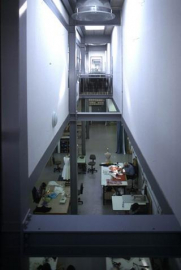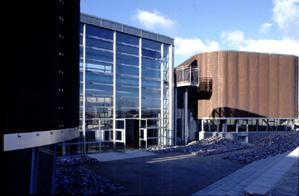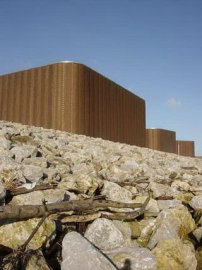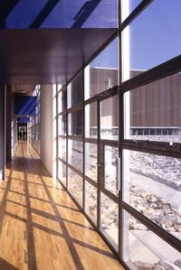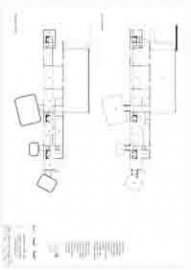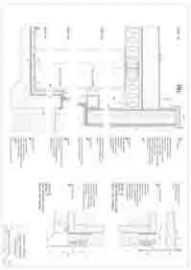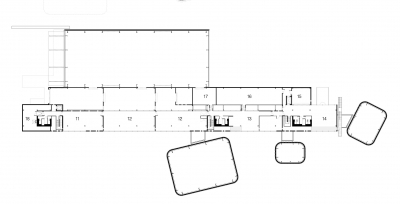TR2 Plymouth Theatre Royal Production Centre
The design reflects the clients ambition for a landmark, necessity for new facilities, and desire for the interconnection of manufacturing, education and rehearsals, to create a building with a sense of identity, community and integrity. This is an architecture of erosion, time and theatre. The materials explore and celebrate change. With time, weather, and the salt laden air, the bronze will slowly blacken, with hints of green and gold. The bright zinc and galvanized surfaces will develop a mottled softness, internal workshop wall and floor panels acquiring the patina of age, paint and damage before replacement.
Each space expresses its use and engineering requirements to generate form, plan and section of the three main building elements: 1. Workshop and Office Spine, tied together by the Communal (circulation) Route and services distribution, 2. Attached Assembly/Paint Studio for the fit-up of two complete sets, and 3.the three isolated Rehearsal Pods (driftwood) on the rock beach.
The waterfront site defines the north-south orientation, turning away from the industrial backdrop and towards the river, separating and defining public from private, performance from manufacturing, noisy from quiet. To the west, the zinc-clad workshop elevations hide the view, only finally revealed through the fully glazed entrance. From here the Communal Route, the length of the east elevation, connects all spaces, with views of the river, landscape and bronze-clad rehearsal pods.
STRUCTURE:
The engineering design provides long spans, column free spaces, fast construction and erection, and integrates with the architecture and services to provide good quality, low energy buildings. Each building is separated to allow for differential settlement of the reclaimed land. ACOUSTICS:
The very noisy workshops are separated from sensitive rehearsal spaces in plan. Each rehearsal space is isolated within an independent pod in the landscape, linked back to the building by acoustic lobbies. Each pod is freely dimensioned by modulating the volume to provide sufficient working space and reverberation, in turn varied by drapes around the perimeter. Additional control is provided by absorbent and diffusing panels to walls and ceilings.
DETAIL DESIGN - PHOSPHOR BRONZE MESH CLADDING:
Enclosing each rehearsal space is a tactile quilted curtain of phosphor bronze mesh cladding, with continuous glazing below. The curtain consists of a compressed geo-textile mat maintaining tension in the phosphor bronze mesh to eliminate flapping with thermal expansion and avoids work-hardening. The vertical panel edges enclose stainless steel strips perforated by stainless steel eyelets, to provide sufficient pull-out strength. All cladding components are self-finished and non-ferrous to ensure longevity, avoid bi-metallic corrosion, and require minimal maintenance. The mesh is a Plain-Dutch weave with 0.4mm diameter warp wires - 10 per inch, and 0.3mm diameter weft wires - 95 per inch. The configuration provides good corrosion and fatigue resistance, visual opacity (max. 200mu aperture), limits stretch, limits mass to 2.5kg/m2, and will weather to form a constantly changing patina.

